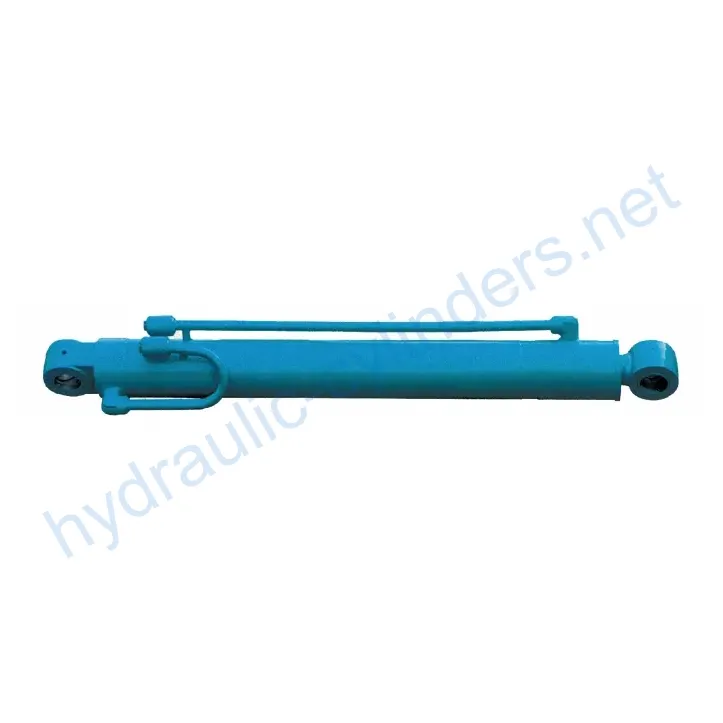Arm Cylinder For Kato Small Excavator HD512-3
Introduction
The Arm Cylinder for Kato Small Excavator HD512-3 is a specially designed hydraulic cylinder that provides linear motion and power to the arm of various types of machinery, such as excavators, cranes, and mechanical arms. The arm cylinder plays a crucial role in hydraulic systems, enabling the efficient movement and control of additional tools or attachments. These cylinders not only achieve smooth motion but also withstand heavy loads, ensuring the efficient operation and reliability of the machinery in various working conditions.
Features
-
High-Efficiency Transmission
The Arm Cylinder provides powerful linear motion and force, ensuring high-performance capabilities for the mechanical arm in various operations.
-
Precise Control
Through the hydraulic system, the Arm Cylinder enables precise motion control, making the operation of attached tools more flexible and accurate.
-
Durability
The Arm Cylinder is typically manufactured using high-strength materials, exhibiting excellent wear resistance and corrosion resistance, making it suitable for long-term use in harsh environments.
-
Versatility
These cylinders can be widely applied to various machinery such as excavators, cranes, and mechanical arms, adapting to different working requirements.
-
Easy Maintenance
Designed with ease of maintenance and replacement in mind, the Arm Cylinder facilitates convenient regular inspections and maintenance, reducing equipment downtime.
Applications
-
Construction Engineering
In excavators and cranes, the Arm Cylinder controls the movement of buckets or booms for earthworks, material handling, and structural installation.
-
Manufacturing Industry
In automated production lines, the Arm Cylinder facilitates the motion of mechanical arms for assembly, welding, and handling processes, enhancing production efficiency and accuracy.
-
Agricultural Machinery
In agricultural machinery such as harvesters and seeders, the Arm Cylinder controls the movement of operating arms for tasks like seeding, fertilizing, and harvesting.
-
Mining
In mining equipment, the Arm Cylinder controls the arm movement of mining machinery for ore extraction and transportation.
-
Logistics and Transportation
In forklifts and handling robots, the Arm Cylinder controls the lifting and movement of forks, enabling material handling and stacking.
Design Considerations and Selection Standards
-
Load-Bearing Capacity
The Arm Cylinder is designed to withstand specific load requirements, ensuring safe and efficient operation.
-
Sealing
Various sealing components, such as piston seals and rod seals, are used. These seals are made of wear-resistant materials like polyurethane and nitrile rubber. The cylinder body and threaded ends undergo fine treatment to improve wear resistance.
-
Durability
The Arm Cylinder is built to be durable, with considerations for corrosion resistance and long-term usage in challenging environments.
-
Safety
Safety measures, such as pressure relief valves, are integrated into the design to prevent overloading and ensure safe operation.
-
Maintainability
The design of the Arm Cylinder allows for easy maintenance and replacement, reducing downtime and enhancing overall efficiency.
Sealing and Lubrication
The Arm Cylinder utilizes various sealing components, such as piston seals and rod seals. These seals are made of wear-resistant materials like polyurethane and nitrile rubber. The cylinder body and threaded ends are finely treated to improve wear resistance. Regular lubrication with appropriate hydraulic oil is necessary to ensure smooth operation and prevent wear and tear.
Regular Inspection and Preventive Maintenance
- Regularly check for any signs of leakage or damage
- Inspect the condition of seals and replace if necessary
- Clean the cylinder and remove any debris or contaminants
- Check the hydraulic connections for any loose fittings
- Ensure proper lubrication of the cylinder
Product Installation Guide
1. Ensure the excavator is powered off and in a stable position.
2. Locate the arm cylinder installation area and remove any obstructions.
3. Carefully align the arm cylinder with the mounting points on the excavator.
4. Securely attach the arm cylinder using the provided bolts or pins.
5. Double-check the tightness of the connections and ensure proper alignment.
6. Test the functionality of the arm cylinder by operating the excavator’s controls.
Safety Considerations and Environmental Factors
When using the Arm Cylinder, it is important to follow safety measures to prevent accidents and ensure personnel safety. Proper training and adherence to safety protocols are crucial. Additionally, considering the environmental impact, it is advisable to dispose of any used hydraulic oil or components in an environmentally responsible manner.
Fault Diagnosis and Common Issues
1. Leakage: Check for any signs of oil leakage and inspect the seals for damage.
2. Insufficient Power: Check the hydraulic pump and system for any issues that may affect cylinder performance.
3. Abnormal Noise: Investigate possible sources of noise, such as loose connections or damaged components.
4. Slow Operation: Inspect the hydraulic system for any restrictions or blockages affecting fluid flow.
5. Cylinder Drift: Check the control valves and seals for any issues causing unintended movement.
For troubleshooting and resolving these issues, it is recommended to consult the equipment manual or seek assistance from a qualified technician.
Remember to organize the article logically, utilize subheadings for easy navigation, incorporate relevant images or charts to enhance understanding, and ensure the content is clear, concise, and suitable for readers with varying levels of technical knowledge.
Author: lyl
We are a professional manufacturer of replacement hydraulic cylinders, offering a wide range of products. We have become one of the leading manufacturers and wholesale distributors of hydraulic cylinders in domestic

